Autumn is fast approaching: time to gear up for fall foliage photography! I’ve compiled below a list of my favorite tips for getting the most out of your autumn photos. I suggest you read this quick, and then stop wasting time and get out there – fall will be over before you know it!
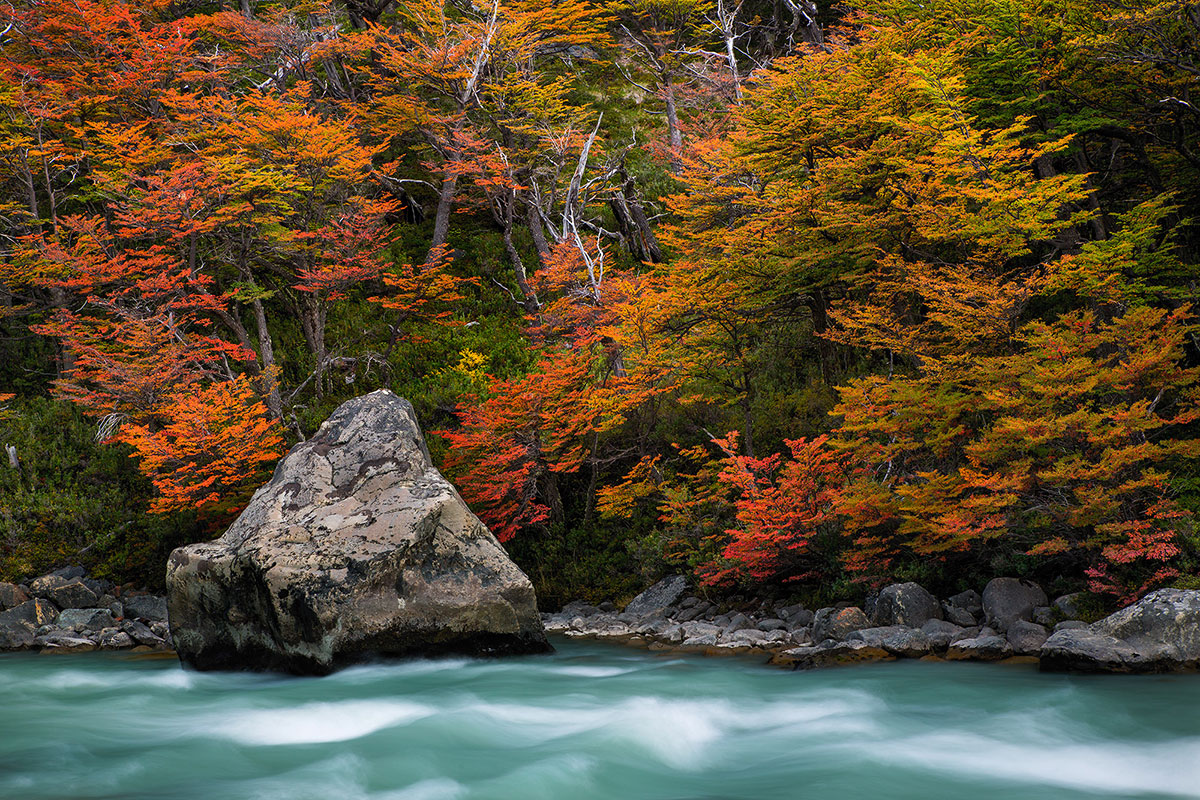
Chase peak foliage
Online resources have made being in the right place at the right time for peak autumn color easier than ever before. A multitude of websites dedicated to national, regional, or local fall color reports allow you to monitor fall color progression and determine where and when to get the best autumn conditions (one of my favorites is The Foliage Network). Mountain areas often give you the best chance of catching amazing fall color, as different altitudes will peak at different times, giving you more flexibility and options for shooting peak conditions (assuming, of course, that you can easily access higher altitude areas by car or by foot).
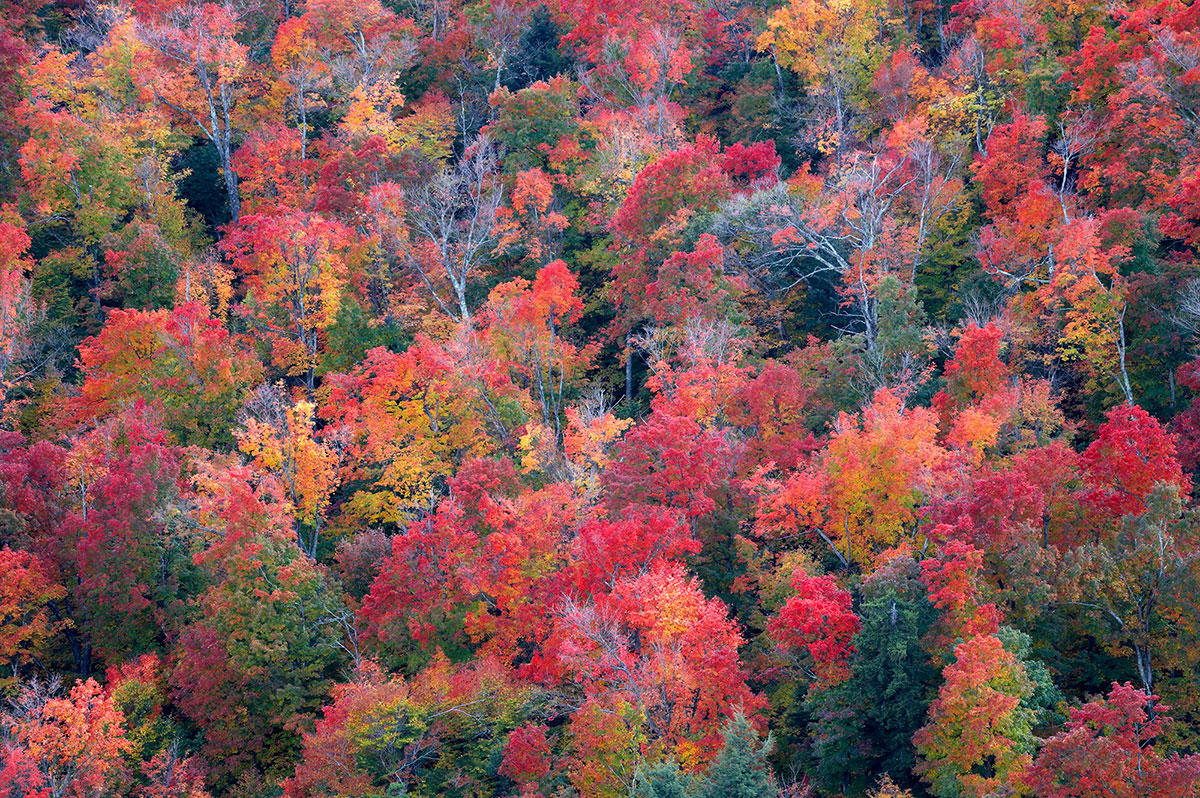
Take advantage of autumn weather
Autumn often brings cool, wet weather; this can lead to some magical conditions. Rise early for sunrise and hope to get some fog, especially if shooting near water which will improve your chances of early morning mist. Overcast skies are perfect for many types of fall scenes, including stream and waterfall shots. In fact, a little bit of rain is even better! Overcast skies diffuse light and reduce contrast, whereas wet conditions can help intensify colors. Sunny weather can be great too, as everyone loves to see bold autumn color juxtaposed against a brilliant blue sky. Personally, I like to photograph sunlit fall foliage beneath a sky filled with dramatic clouds.
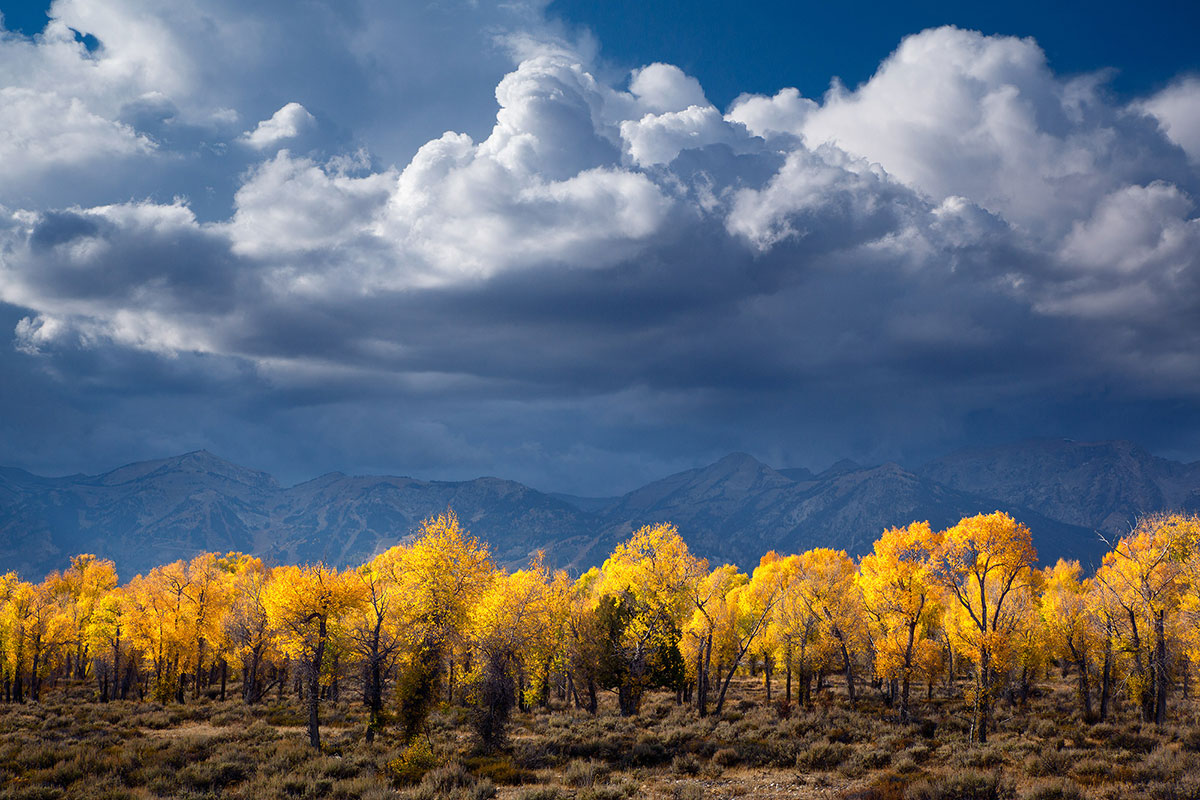
Use a polarizer filter
Polarizer filters reduce reflections and cut through glare, thereby enhancing color. They are particularly effective when photographing wet foliage and autumn streams and waterfalls. Polarizers can also darken blue skies and increase contrast between any clouds and the sky behind them (just be careful when using a polarizer with a wide-angle lens; polarization is maximized when shooting at a 90 degree angle from the sun, and with a wide-angle lens, you’re going to be taking in a broad angle of view, leading to uneven polarization which can result in one part of the sky looking darker than the rest). When properly polarized, the color of fall foliage can be quite stunning.
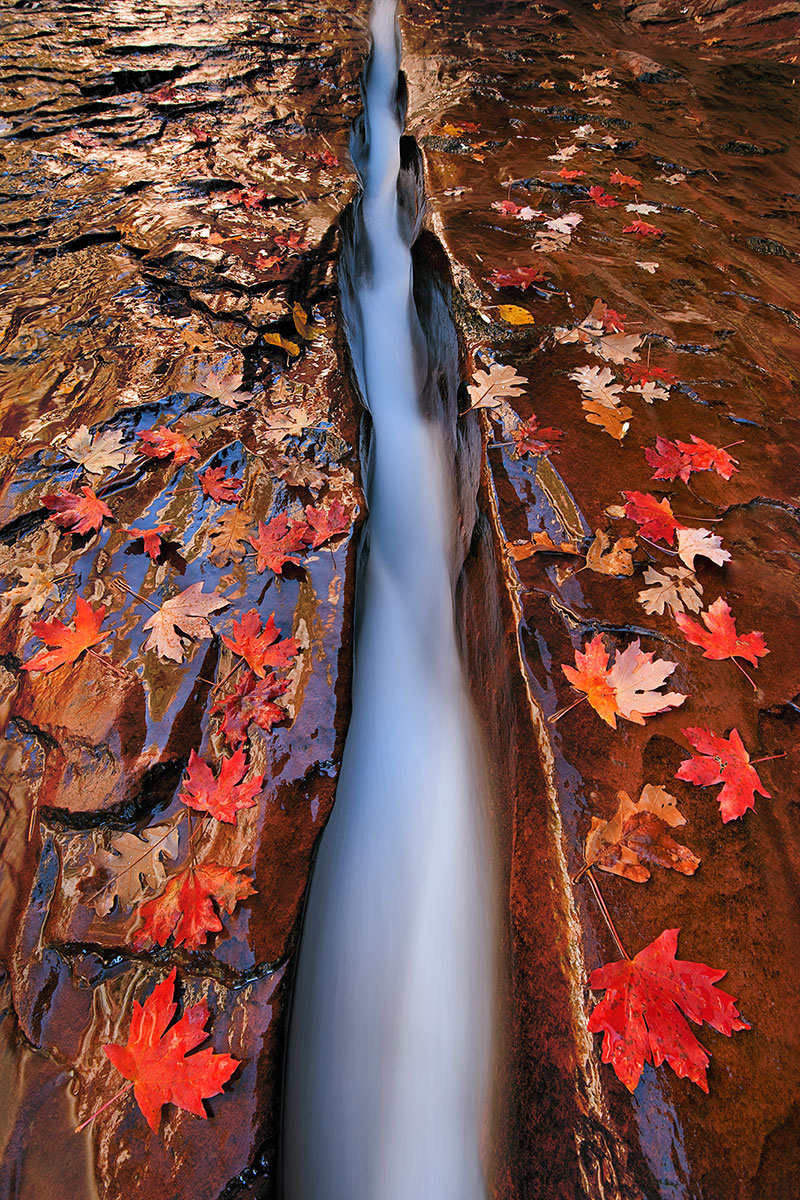
Shoot autumn color reflected in water to create stunning abstract fall photos
Reflection shots work best early or late on a sunny day: you want the reflected foliage to be in bright sunlight, and the water in the shade. Objects in shade are lit only by light reflecting from the blue sky above, and thus will be rendered with a cool color cast; by mixing the two types of light, you get a lovely blend of colors. Still water, such as a pond or lake on a windless day, can create a mirror reflection of the fall color covering the far shore. Look for rocks, grass, or logs in the water to break up the reflection and to make your composition more interesting. Moving water, such as a fast-flowing brook or mountain stream (or rippled lake water on a breezy day), allows you to create impressionistic blurs using long exposures. A polarizer filter can enhance the color of reflections, but avoid full polarization, which can remove reflections; partial polarization can improve the colors in your reflection scene.
Related Video: How to Capture Reflections in Water Photography

Zoom in for autumn intimates
I like to capture intimate scenes that help tell the story of the changing of the seasons. A short telephoto zoom (such as a 70-200mm) is perfect for zooming in on an intimate forest scene, small details in the landscape, or a distant hillside covered in fall color. I sometimes collect colorful fallen leaves, and then arrange the leaves in a pleasing pattern for intimate close-up shots. Make sure to arrange the leaves in a realistic way (if every leaf is color-side up, viewers might suspect that the scene was staged). I enjoy close-up shots of details that tell the story of autumn, such as ripened berries, bracken ferns, and changing leaves scattered on a mossy forest floor.

Aim skyward on a sunny day
Looking for a compelling autumn perspective to wow viewers? On a sunny day, point your camera up with a wide-angle lens to capture fall foliage against a blue sky. A wide-angle perspective will render the tree trunks as converging diagonal lines, leading the viewer’s eye deep into the composition. Try including the sun in the picture, partially covered by a tree trunk, to add an attractive “star burst” effect.

Conclusion
Autumn presents the photographer with a dazzling array of colors and textures. With some research, patience, and creativity, you can capture an amazing number of great photographs in just a short period of time as the season changes.
About the author: World-renowned professional photographer and Tamron Image Master Ian Plant is a frequent contributor to several leading photo magazines (including Outdoor Photographer, Popular Photography, and others) and the author of numerous books and instructional videos. You can see more of Ian’s work at www.ianplant.com.
Have something to add to the story? Leave a comment or email editor@outdoorphotographyguide.com.
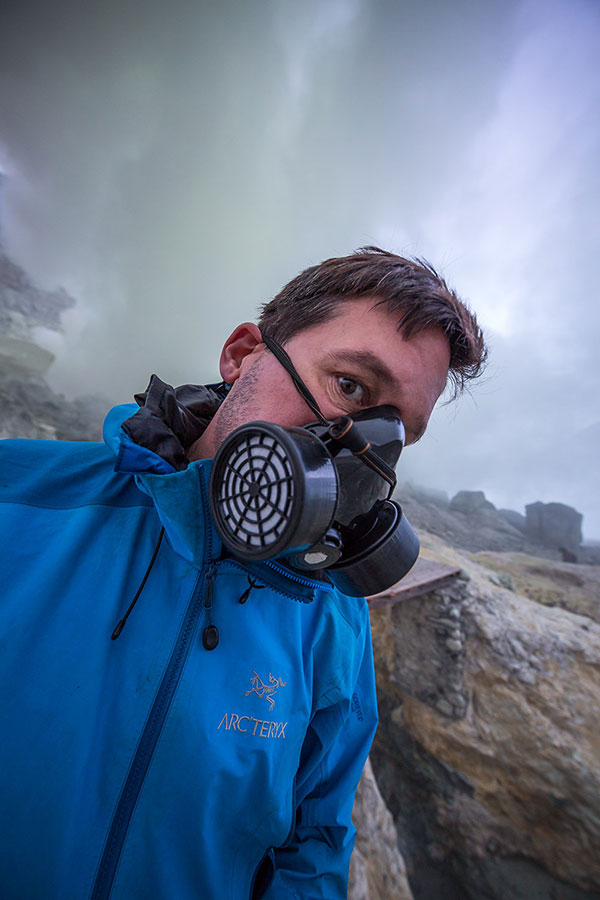
love your suggestions, thanks
I've been learning a lot from this website, & I also watch the videos every chance I get. I also tell my aunt & uncle what I've learned because they've been taking pictures since the summer of 1981. They often give me advice on how to take better pictures. Keep up the good work * thank you.
Little known area of Banner Elk N.Carolina due to ideal weather I predict will produce spectacular colors this year. It's in the Appalachian Mtns. As a lifelong resident I might be a little bias about the area but not the prediction. Good luck
When going out in the light rain , do you have any tips on keeping my camera and gear dry? I try to carry only what I need when hiking and have started carrying a poncho, any other tips?
A motivating discussion is definitely worth comment. There's no doubt that that you ought to publish more on this issue, it might not be a taboo subject but typically people don't discuss these issues. To the next! All the best!!